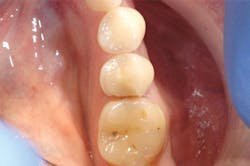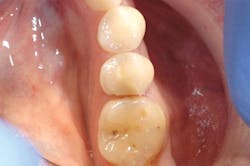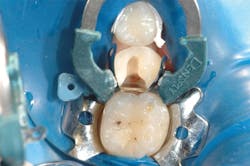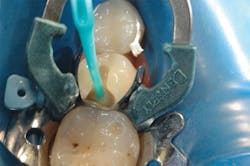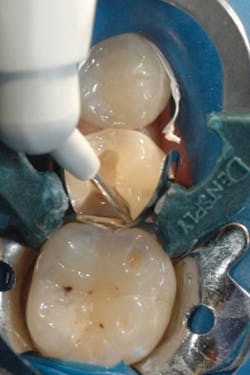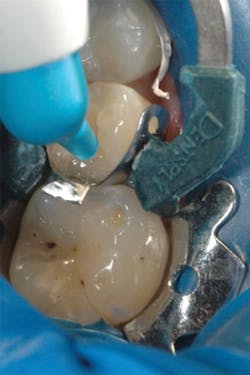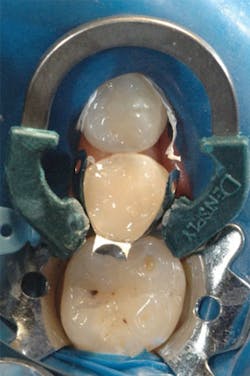Creamy or stiff composite handling?
The first resin-based light-cured dental composites were introduced in the 1970s. Since that time, significant advancements have been realized in resin and filler technology. Today, more than 70 different brands of composites exist on the market.
Practitioners are faced with ever-increasing composite choices that are designed to give better results during placement and throughout the lifespan of the restoration. Ironically, the introduction of sophisticated materials designed to improve restorative procedures can have the opposite effect. Today's clinicians can be easily confused about the subtle differences among the many available composite materials. They may find it more difficult to make the correct decision about which material is best for each clinical situation.1
Choosing which composite material to purchase requires critical evaluation. Ideally, practitioners should rely on published reports and a careful review of a product's physical properties when selecting a material. However, this level of review is generally unrealistic for clinicians. Dentists' purchasing decisions may be based on cost, brand preference, and the "works best in my hands" argument, rather than a strict review of each product's fracture toughness, volumetric shrinkage, or other properties. Clinicians become more confident in their procedures and materials through repetition of use and clinical observations. This is especially true when considering material choices. Exacting use of poorly selected materials will not offer better clinical results than use of ideally chosen materials.2
With the introduction of TPH Spectra Universal Composite by Dentsply Sirona Restorative, dentists have one material that can be used for all situations. This new composite is based on the resin technology of TPH3 and contains nanohybrid- and micro-filler components. The result is a composite with the potential to perform well in the anterior or posterior, as well as having toothlike translucency, improved polishability, enhanced color stability, and good wear resistance.3,4,5
TPH Spectra also comes in two handling choices: a creamy light-viscosity formulation and a packable high-viscosity formulation. For both viscosities, the physical properties are similar. Because handling preference is subjective and highly individualized, practitioners are now able to select the right viscosity for all clinical situations.
Case study
An intraoral exam revealed a fractured composite resin restoration on tooth No. 29. The patient's chief complaint involved food impaction in the area leading to discomfort after meals (figure 1). After verifying the patient's medical history and reviewing radiographs, a direct composite resin restoration of the disto-occlusal surfaces was treatment planned.
Anesthesia was achieved with one carpule of 4% Articadent Dental and epinephrine 1:100,000 (Dentsply Sirona) via buccal infiltration. Caries excavation was completed using a 330 carbide bur on a high-speed handpiece and a No. 4 round bur on a low-speed handpiece. The preparation was verified caries free with Snoop Caries Detector (Pulpdent Corporation) (figure 2).
Figure 1: Preoperative appearance of tooth No. 29. Note that the existing restoration has fractured interproximally, leaving an open contact.
Figure 2: The preparation on tooth No. 29 is verified with Snoop Caries Detector.
Figure 3: Tooth No. 29 has been isolated with a rubber dam and Palodent Plus Sectional Matrix.
Figure 4: After etching with 34% phosphoric acid, Prime&Bond Elect is scrubbed into the preparation.
A rubber dam was placed and isolation of the preparation was accomplished with Palodent Plus Sectional Matrix System (Dentsply Sirona Restorative) (figure 3). Because of the depth and size of the final preparation, a selective-etch technique with Prime&Bond Elect (Dentsply Sirona Restorative) was used. This technique was chosen to maximize enamel bonding while minimizing the potential for postoperative sensitivity.6,7 The enamel was etched with 34% phosphoric acid for 15 seconds and then rinsed. Prime&Bond Elect was scrubbed into the preparation for 20 seconds, followed by a five-second air-drying to remove the solvent. The adhesive was light-cured for 10 seconds (figure 4).
Figure 5: The first restorative layer is placed using Surefil SDR flow+ via a compula tip.
Figure 6: The occlusal layer is completed using TPH Spectra Universal Composite Low Viscosity shade A2.
Figure 7: The filled preparation of tooth No. 29 after light curing, before removal of the matrix and finishing and polishing.
The first restorative layer was placed using Surefil SDR flow+ (Dentsply Sirona Restorative), a low-stress bulk-fill material with excellent cavity adaptation (figure 5). TPH Spectra Low-Viscosity shade A2 was selected for the final occlusal layer because of its creamy handling, and placed in 2 mm increments (figures 6 and 7). Each composite increment was light-cured for 20 seconds. After the last layer of composite was cured, the Palodent Plus ring and sectional matrix were removed.
Figure 8: The final restoration on No. 29.
The final restoration was finished with fluted composite finishing burs and white stones to achieve proper shape and contour. After occlusal adjustment, the composite was polished with Enhance Finishing System points and cups (Dentsply Sirona Restorative) (figure 8).
References
1. Devoto W, Saracinelli M, Manauta J. Composites in everyday practice: how to choose the right material and simplify application techniques in the anterior teeth. Eur J Esthet Dent. 2010;5(1):102-124.
2. Jacob RF, Carr AB. Hierarchy of research design used to categorize the "strength of evidence" in answering clinical dental questions. J Prosthet Dent. 2000;83(2):137-152.
3. Garg N, Garg A. Tooth preparation for composite restorations. In: Textbook of Operative Dentistry. New Delhi: Jaypee Brothers Medical Publishing; 2010:260.
5. Vargas M. Nanomicrohybrid composites make posterior placement easier. Dent Today. 2012;31(5):128,130-131.
6. Ritter R. Using the selective etch technique for esthetic restorations. Inside Dentistry website. http://www.dentalaegis.com/id/2011/03/using-the-selective-etch-technique-for-esthetic-restorations. Published July 2007. Accessed September 12, 2016.
7. Perdigão J. New developments in dental adhesion. Dent Clin N Am. 2007;51:333-357.
Jason H. Goodchild, DMD, is currently associate professor and chair of the Department of Diagnostic Sciences at Creighton University School of Dentistry. Dr. Goodchild is a continuing education manager at Dentsply Sirona Restorative and involved in educating dentists on new materials and techniques to improve clinical practice. He has published numerous articles and lectures on a variety of topics, including treatment planning, treatment of medically complex patients, restorative dentistry, pharmacology, and emergency medicine in dentistry.
